Apple trees are a popular choice for many gardeners and fruit enthusiasts, providing beauty, shade, and delicious, nutrition-rich fruits. In this informative article, we will delve into various aspects of caring for mature apple trees ranging from identification, pruning, and fertilization, to pest control, watering, and harvesting.
Identifying Mature Apple Trees
Mature apple trees can be identified by examining various aspects such as their age, size, and bark appearance. Typically, apple trees reach maturity between 4-8 years after planting, depending on the rootstock and growing conditions. A mature apple tree will have an established root system, which supports a more sizable and robust canopy compared to younger trees. These trees will produce fruit in greater quantities and more consistently than their immature counterparts. The size of a mature apple tree can range from 10-25 feet tall, depending on the variety and pruning practices.The bark of a mature apple tree is another distinguishing characteristic to look for. As the tree ages, its bark becomes rougher, displaying a distinct pattern of gray-brown, furrowed ridges. This is in contrast to younger apple trees, which tend to have smooth, light-gray bark. Additionally, the branches of a mature apple tree will be sturdier and thicker, with the ability to support the weight of a more abundant fruit crop. The formation and abundance of fruiting spurs, or short lateral branches that bear fruit, are more common on mature trees than on younger or more aged trees.In addition to considering age, size, and bark appearance, it is essential to take note of the health and vigor of mature apple trees. A healthy apple tree will have dark green leaves with a shiny surface, and it should show little-to-no signs of stress or damage from pests and diseases. Pruning practices play a significant role in maintaining a tree’s health, as proper pruning ensures the tree has access to adequate light and air circulation. Consequently, well-pruned mature apple trees are more likely to produce high-quality, flavorful fruit and remain fruitful for many years to come.
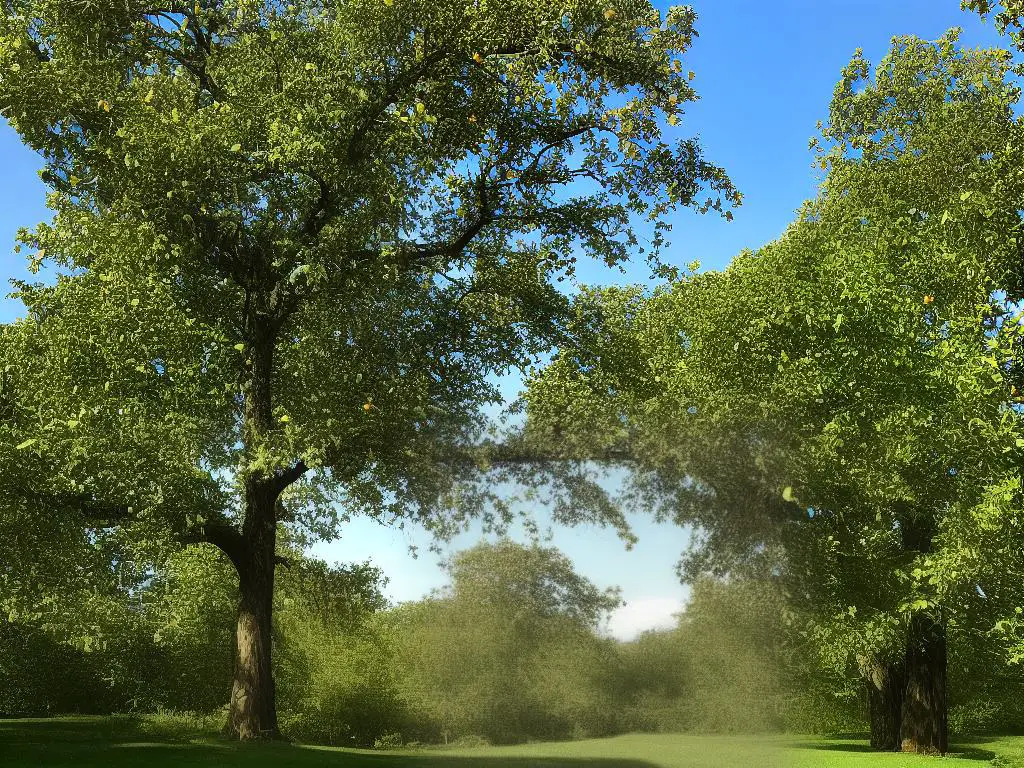
Pruning Mature Apple Trees
Indeed, pruning mature apple trees is a vital practice to ensure optimal health and fruit production. As apple trees age, they tend to become overgrown with excess branches and foliage, which can lead to reduced air circulation and decreased light penetration. This can cause problems, such as lower fruit quality and an increased susceptibility to diseases and pests.
Pruning allows for the removal of dead, damaged, or diseased branches, promoting the growth of new, healthy ones. Furthermore, pruning aids in maintaining the tree’s structure and balance, making it less prone to breakage during high winds or heavy fruit loads. By understanding and implementing proper pruning techniques, mature apple trees can continue to thrive and provide plentiful fruit for years to come.
The ideal time to prune apple trees is during late winter or early spring before new growth begins. This timing helps avoid potential winter injury and reduces the risk of infections from diseases, as the wounds from pruning will heal more quickly. It is important to use sharp and sterilized tools, such as pruning shears, loppers, or pruning saws, for clean and precise cuts. When pruning, it is advisable to make angled cuts close to, but not flush with, the branch collar to facilitate healing and prevent rot.
Pruning a mature apple tree requires careful prioritization of branches for removal. Start by eliminating dead or damaged limbs, then proceed to remove those that cross or rub against one another. Vertical branches, known as water sprouts, should also be taken out as they do not bear fruit and use up the tree’s valuable energy. To enhance light penetration and air circulation, which in turn encourage better fruit development, trim some of the horizontal branches as well.
However, remember that a tree can be over-pruned, so it’s crucial to maintain a balance between eliminating excess growth and preserving a strong structure to support the tree and its fruit.
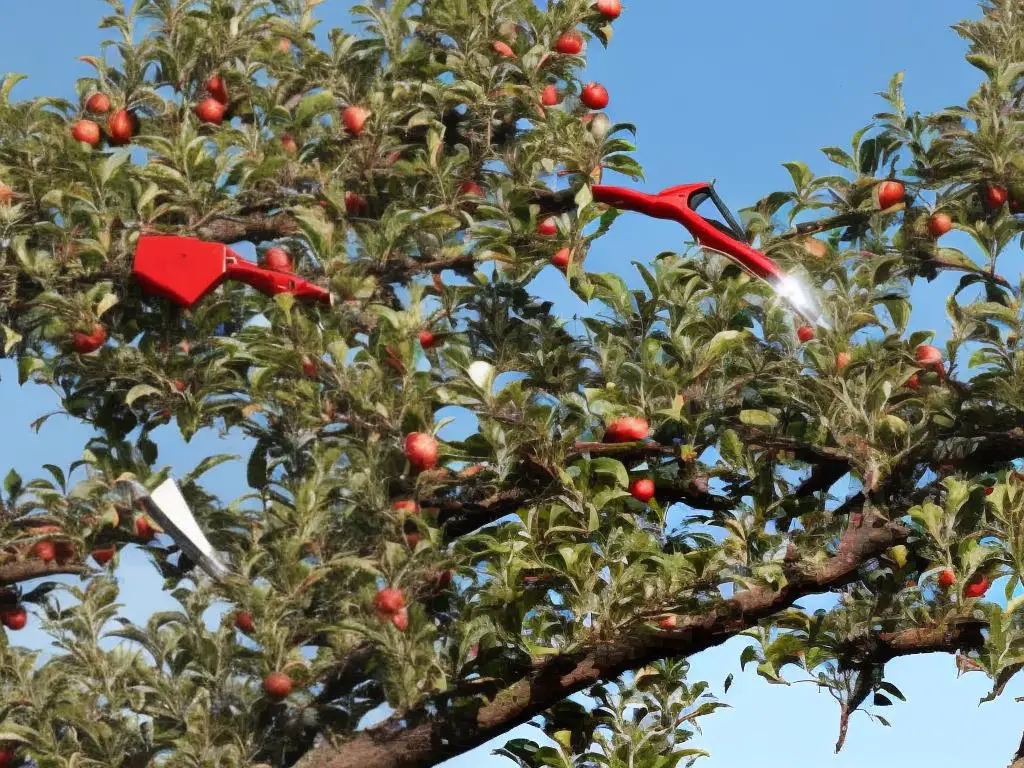
Fertilizing and Soil Management
Fertilizing and soil management are vital components to ensure the health and productivity of mature apple trees. Nitrogen (N), phosphorus (P), and potassium (K) are the primary nutrients needed by apple trees, but it is imperative to supply the soil with essential micronutrients such as magnesium, calcium, and sulfur. Numerous types of fertilizers exist for mature apple trees, comprising granular, slow-release fertilizers, along with organic options like composted manure and compost. Application rates for these fertilizers differ depending on the specific product, the tree’s age and size, and the nutrient content of the soil. Adhering to the manufacturer’s guidelines for appropriate application rates and timing is crucial, generally involving the application of fertilizer in early spring before bud break.
In addition to proper fertilization, maintaining the right soil characteristics is vital for promoting healthy growth in mature apple trees. For optimal results, apple trees prefer well-draining, loamy soil with a pH level between 6.0 and 6.5, which is slightly acidic. Soil tests can help determine the existing pH level, nutrient content, and overall soil composition, allowing you to make the necessary amendments. If the soil pH needs to be lowered to reach the desired level, acidic inputs like elemental sulfur or aluminum sulfate can be added. To increase the pH level, lime can be applied. Furthermore, incorporating organic matter into the soil, such as compost or aged manure, can improve soil structure, nutrient availability, and moisture retention.
Proper irrigation and monitoring soil moisture is crucial for maintaining the health of mature apple trees. These trees typically require consistent moisture for optimum growth, particularly during fruit development. Drip irrigation systems or soaker hoses can deliver water directly to the tree’s roots, conserving water and reducing the risk of disease caused by wet foliage. Additionally, using mulch around the base of the tree can conserve soil moisture and suppress weeds, which could compete with the tree for nutrients and water. Monitoring soil moisture with a moisture meter or regularly checking the soil at a depth of 6-12 inches can help ensure the tree receives adequate water without overwatering or causing stress.
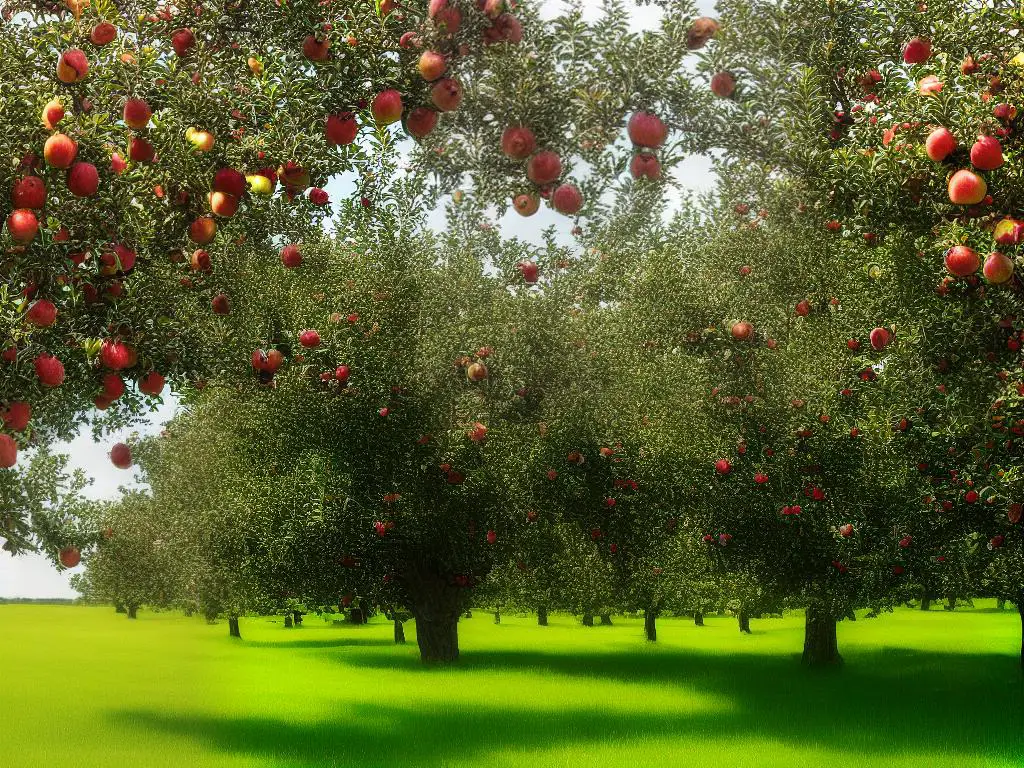
Pest and Disease Control
Another important aspect of maintaining mature apple trees is addressing the threat of pests and diseases. Common pests such as the codling moth, apple maggot, and aphids can cause major harm to the trees. To prevent infestations, it’s essential to monitor for pests using traps or other methods while keeping the area around the tree clean by removing fallen fruit and debris. Organic approaches to treatment include using insecticidal soap, neem oil, or beneficial insects like ladybugs and lacewings to control the pest population. Conventional treatments often involve chemical insecticides, which can be applied according to the guidelines provided by the product and local regulations. By staying diligent in caring for mature apple trees, you can ensure their continued health and abundant fruit production.
Apple tree diseases like fire blight, apple scab, and powdery mildew can also have a significant impact on tree health and fruit production. Early disease identification is crucial to mitigate its spread and severity. Monitoring signs of disease, such as discolored leaves or fruit, oozing bark, or other abnormal symptoms, is a key part of prevention. For organic disease control, pruning affected branches to prevent disease spread, applying fungicides such as copper or sulfur-based products, and choosing disease-resistant apple varieties may help curb the impact of these diseases. Conventional methods involve the use of synthetic fungicides that target specific diseases, which can be effective when applied in a timely manner and following the product recommendations.
For both amateur and professional apple tree growers, proper management of pests, diseases, and overall tree health is crucial for successful cultivation of mature apple trees. Ensuring the right balance is achieved requires the implementation of regular tree care practices such as consistent pruning, appropriate watering, and optimal nutrient management. Employing an integrated pest and disease control approach, which includes cultural, biological, and chemical control methods, can help maintain the longevity and productivity of your apple tree and contribute to an enjoyable cultivation experience.
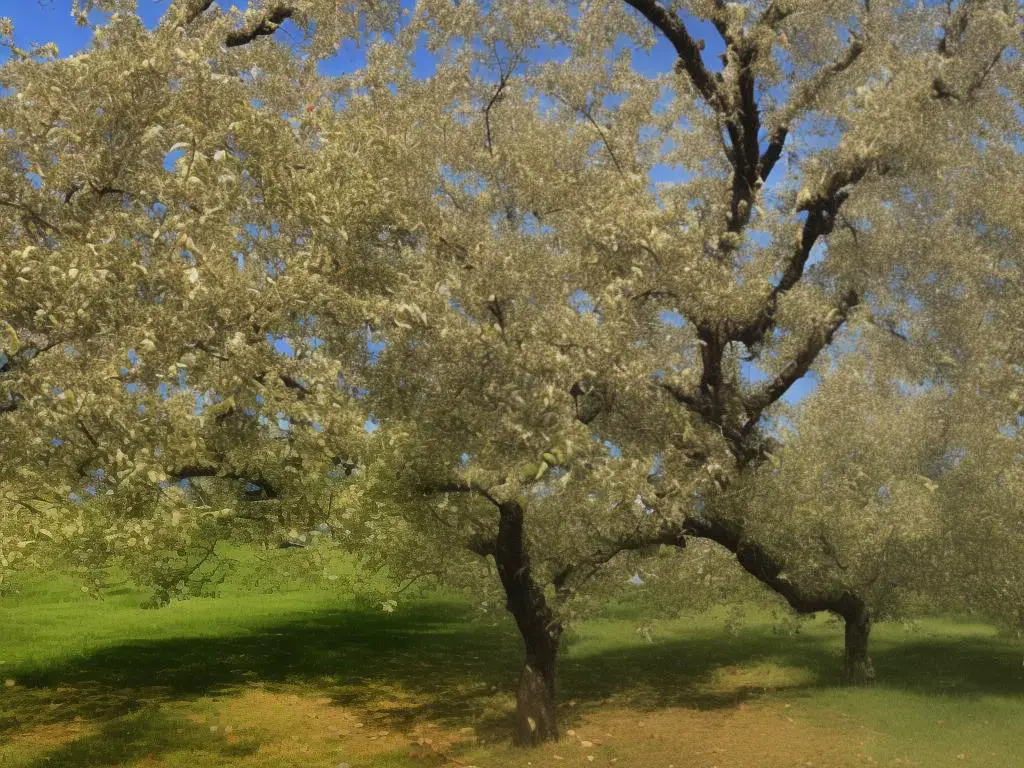
Watering and Irrigation
In order to maintain the health and productivity of mature apple trees, it is vital to follow regular and suitable watering practices. Apple trees, depending on their size and variety, usually necessitate around 15 to 20 gallons of water each week, or approximately 1 inch of rainfall. To ensure healthy growth, it is crucial to keep the soil surrounding the tree moist but not overly saturated, as excess water can lead to root rot and other illnesses. To aid moisture retention and encourage deep-root development, apply a layer of organic mulch at the base of the tree, extending it out toward the branches’ drip line.
Signs of over or under-watering apple trees can include yellowing leaves, premature fruit drop, or reduced fruit size. Overwatered apple trees may also display discoloration and wilting of the leaves, despite the presence of adequate moisture. On the other hand, under-watered trees may exhibit a slow growth rate, an overall decline in health and restrained fruiting capacity.
To prevent these issues, regularly monitor soil moisture levels, adjusting watering practices as needed in response to environmental conditions and tree health indicators.
Efficient irrigation systems play a vital role in managing water resources for mature apple trees. Drip irrigation, a highly recommended method, delivers water slowly and directly to the tree’s root zone, minimizing water waste due to evaporation or runoff. Integrating moisture sensors into the irrigation system streamlines water usage by monitoring real-time soil moisture levels and automatically adjusting watering schedules. By implementing an efficient irrigation system and adhering to proper watering practices, apple tree growers can ensure the ongoing health and productivity of their trees.
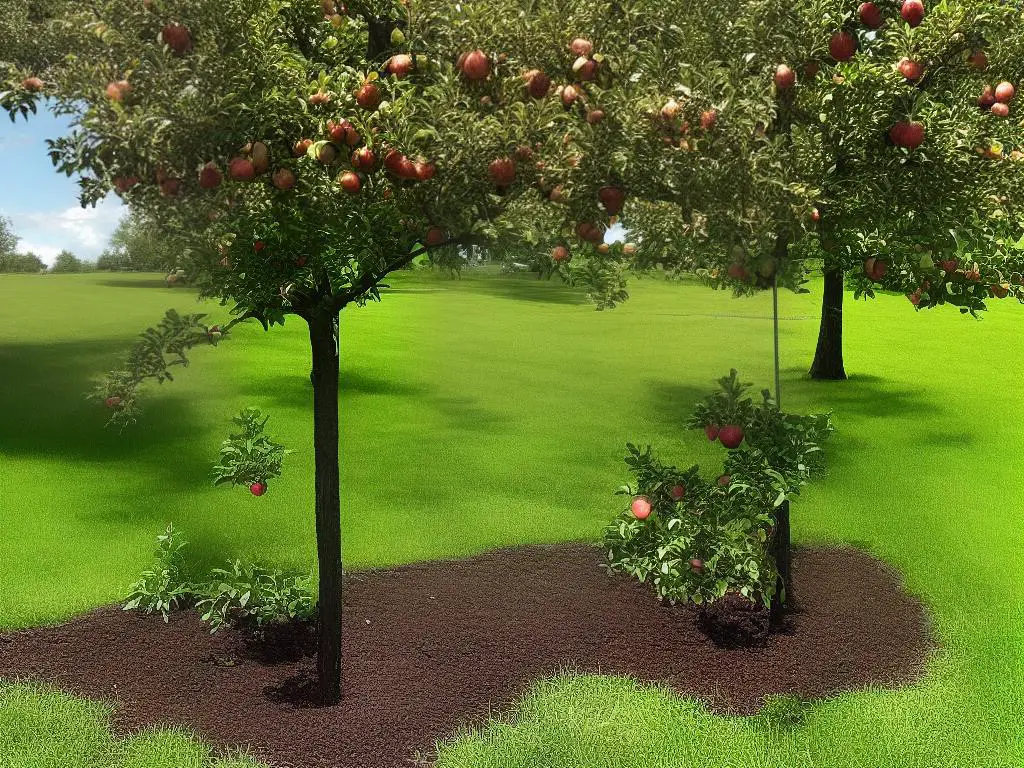
Harvesting and Storing Apples
Harvesting apples at the perfect level of ripeness is essential for optimal flavor and storage potential. To gauge whether the apples are ready to be picked, assess the fruit’s color, firmness, and flavor. Typically, as apples ripen, they become slightly softer, and their green hue changes to red or yellow, depending on the variety. Additionally, if apples start to fall from the tree naturally, this signals that they are ripe for harvesting. When picking apples, it’s crucial to carefully twist and lift each fruit to avoid bruising, which can lead to faster spoilage.
Proper storage conditions play a critical role in prolonging the freshness of apples. For extended storage, it’s best to place the apples in a cool, dark, and humid environment, such as a refrigerator or cellar, with the ideal temperature between 30 to 32°F and humidity level around 90%. Additionally, ensure good air circulation and store the apples in a single layer with space between each fruit to prevent the spread of mold or rot. To maintain freshness, take note of the “one bad apple spoils the bunch” concept: regularly examine the stored apples and remove any that show signs of decay, as they release ethylene gas that accelerates ripening and spoilage of nearby fruits.
When selecting the apples for long-term storage, choose the ones that are free of bruises, cuts, and insect damage. Apples with such imperfections can still be utilized, but they should be consumed or processed promptly as they may not store well and could affect other apples. Additionally, keep in mind that different apple varieties have varying storage capabilities. Late-season cultivars, such as Fuji, Granny Smith, and Braeburn, generally possess longer storage potential compared to early-season varieties like Gala or McIntosh. Experimenting with various storage techniques and taking note of each variety’s unique characteristics can help ensure the best results for preserving the quality and freshness of apples from mature trees.
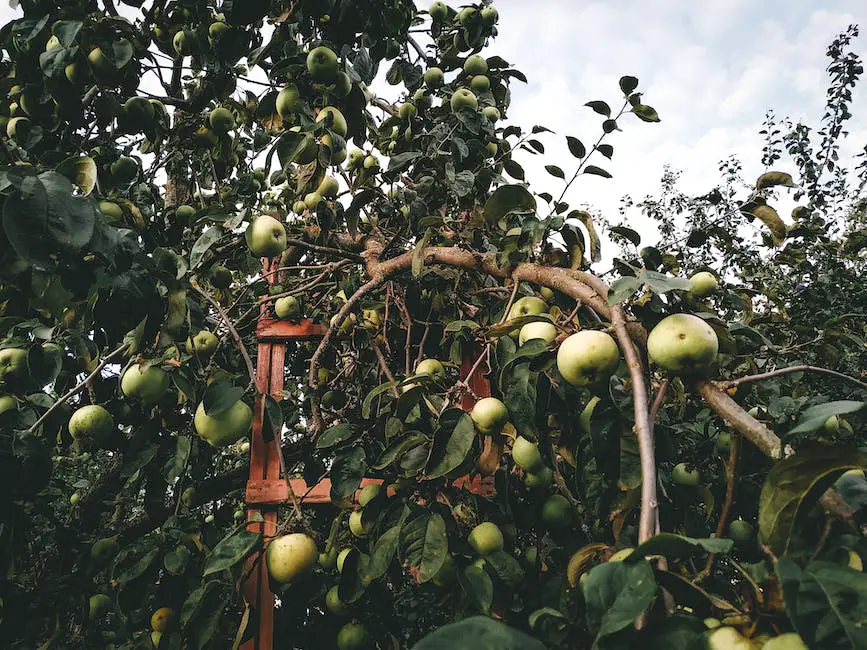
After reading this comprehensive guide, you should feel more confident and knowledgeable about the management and care of mature apple trees. Implementing these essential practices will not only help maintain the health and longevity of your trees but also ensure an abundant produce for you to enjoy. Ultimately, a well-kept apple tree will enhance the beauty and productivity of your garden or orchard for many years to come.